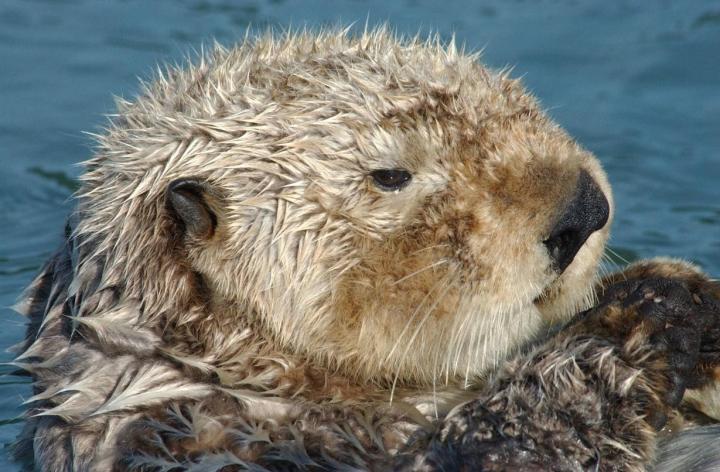Texas A&M researchers found that the small mammals are internally warmed by thermogenic leak from their skeletal muscle, which elevates their metabolic rate

Credit: Tray Wright/Texas A&M University (Image obtained under USFWS Marine Mammal Permit No. MA-043219 to R. Davis)
Sea otters are the smallest marine mammal. As cold-water dwellers, staying warm is a top priority, but their dense fur only goes so far. We have long known that high metabolism generates the heat they need to survive, but we didn’t know how they were producing the heat — until now.
Researchers recently discovered that sea otters’ muscles use enough energy through leak respiration, energy not used to perform tasks, that it accounts for their high metabolic rate. The finding explains how sea otters survive in cold water.
Physiologist Tray Wright, research assistant professor in Texas A&M University’s College of Education & Human Development, conducted the study along with colleagues Melinda Sheffield-Moore, an expert on human skeletal muscle metabolism, Randall Davis and Heidi Pearson, marine mammal ecology experts, and Michael Murray, veterinarian at the Monterey Bay Aquarium. Their findings were published in the journal Science.
The team collected skeletal muscle samples from both northern and southern sea otters of varying ages and body masses. They measured respiratory capacity, the rate at which the muscle can use oxygen, finding that the energy produced by muscle is good for more than just movement.
“You mostly think of muscle as doing work to move the body,” Wright said. “When muscles are active, the energy they use for movement also generates heat.”
Wright said that because muscle makes up a large portion of body mass, often 40-50% in mammals, it can warm the body up quickly when it is active.
“Muscles can also generate heat without doing work to move by using a metabolic short circuit known as leak respiration,” Wright said.
A form of muscle-generated heat we are more familiar with is shivering. Wright said this involuntary movement allows the body to activate muscle by contracting to generate heat, while leak respiration can do the same without the tremors.
Wright said one of the most surprising findings was that the muscle of even newborn sea otters had a metabolic rate that was just as high as the adults.
“This really highlights how heat production seems to be the driving factor in determining the metabolic ability of muscle in these animals,” Wright said.
Sea otters require a lot of energy to live in cold water. They eat up to 25% of their body mass per day to keep up with their daily activities and fuel their high metabolism.
“They eat a lot of seafood, including crabs and clams that are popular with humans, which can cause conflict with fisheries in some areas,” Wright said.
Wright said we know how critical muscle is to animals for activities like hunting, avoiding predators and finding mates, but this research highlights how other functions of muscle are also critical to animal survival and ecology.
“Regulating tissue metabolism is also an active area of research in the battle to prevent obesity,” Wright said. “These animals may give us clues into how metabolism can be manipulated in healthy humans and those with diseases where muscle metabolism is affected.”
As for future research, Wright said there is still a lot we don’t know about otters, including how they regulate their muscle metabolism to turn up the heat on demand.
“This is really just the first look into the muscle of these animals, and we don’t know if all the various muscle types are the same, or if other organs might also have an elevated ability to generate heat,” Wright said.
###
Media Contact
Heather Janak
[email protected]
Original Source
https:/
Related Journal Article
http://dx.




